Tarsar Marsar Trek - A wonderful Kashmir trek
Where is Tarsar Marsar trek?
Tarsar Marsar trek is in Kashmir valley, and is a trek along the Lidder river.
How to reach the trail for Tarsar Marsar trek?
The Tarsar Marsar starts and ends in Aru village, about 12km further from Pahalgam. You can reach Aru village from Srinagar by taking a taxi. The drive is about 100kms, and takes about 3 hours.
What is the best time to do Tarsar Marsar trek?
The best time to do Tarsar Marsar trek is from June to September. The weather is pleasant, and the trek is doable.
What is the difficulty level of Tarsar Marsar trek?
The trek is easy-moderate. It can be completed at a leisurely pace over 6 days. There is 1 long day - the hike from Tarsar lake to Sundersar & Marsar lakes.
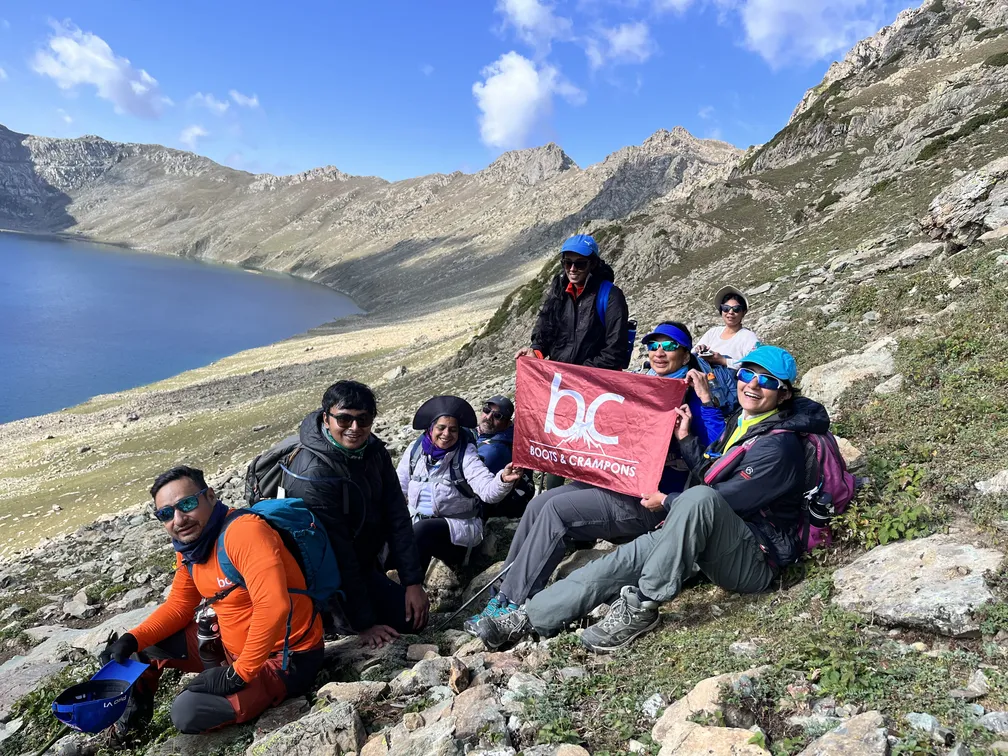
This is a Trek report from the Tarsar Marsar lake trek in Kashmir valley. We did this trek with Boots & Crampons - a boutique mountaineering & trekking company run by my dear friends Bharath and Romil sir.
Day 1 - Aru village to Lidderwat
Long walk- first through pine forests and then through meadows besides the Lidder river. The acclimatization walk was up over the meadows along the stream coming from Tarsar Lake and from Sundersar Lake.
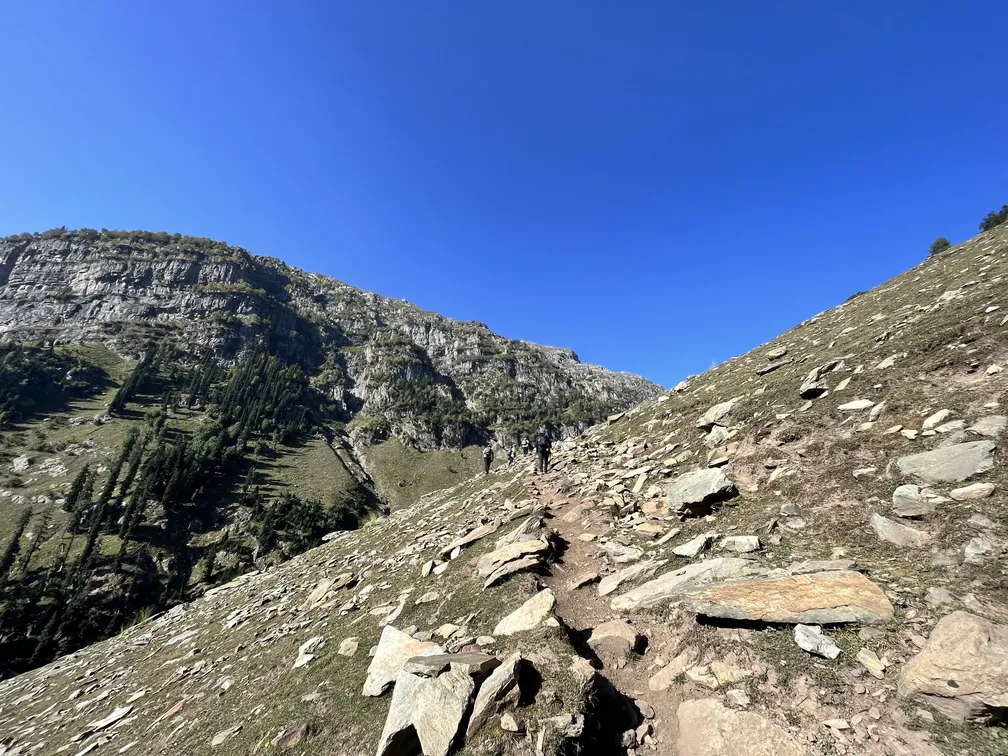
The Lidder river itself originates from the Kolahoi glacier. While not visible in this stretch (as it was hidden by the mountain we were walking on), the Kolahai peak and glacier accompany and oversee you throughout the duration of this stunning trek.
There were a lot of sheep grazing above our Lidderwat campsite on Day 1.
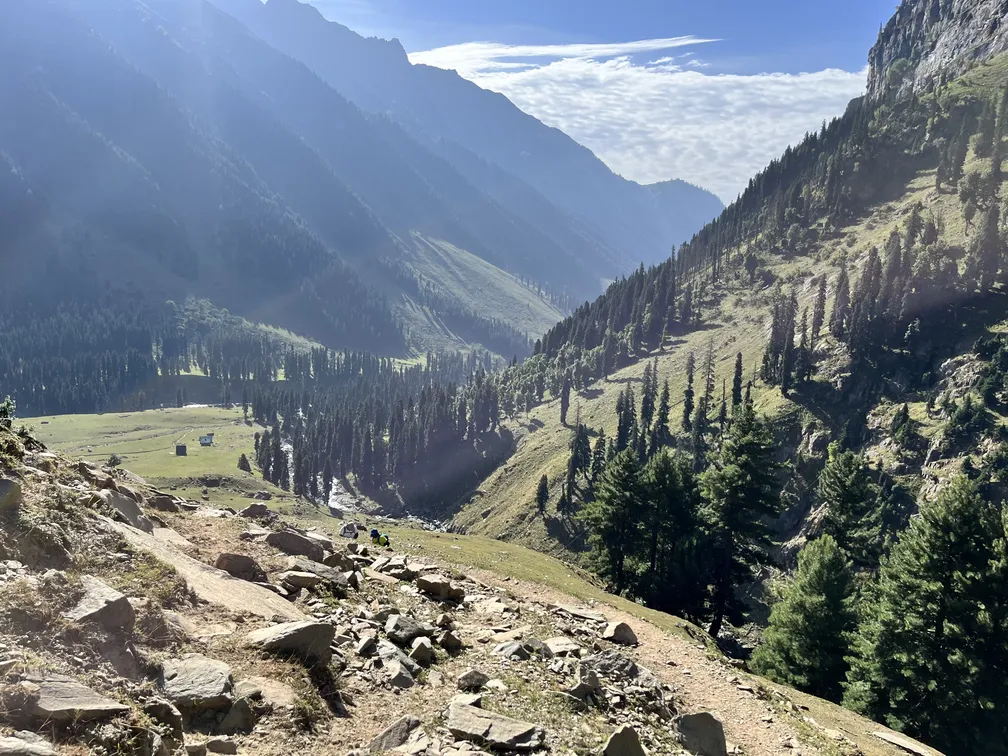
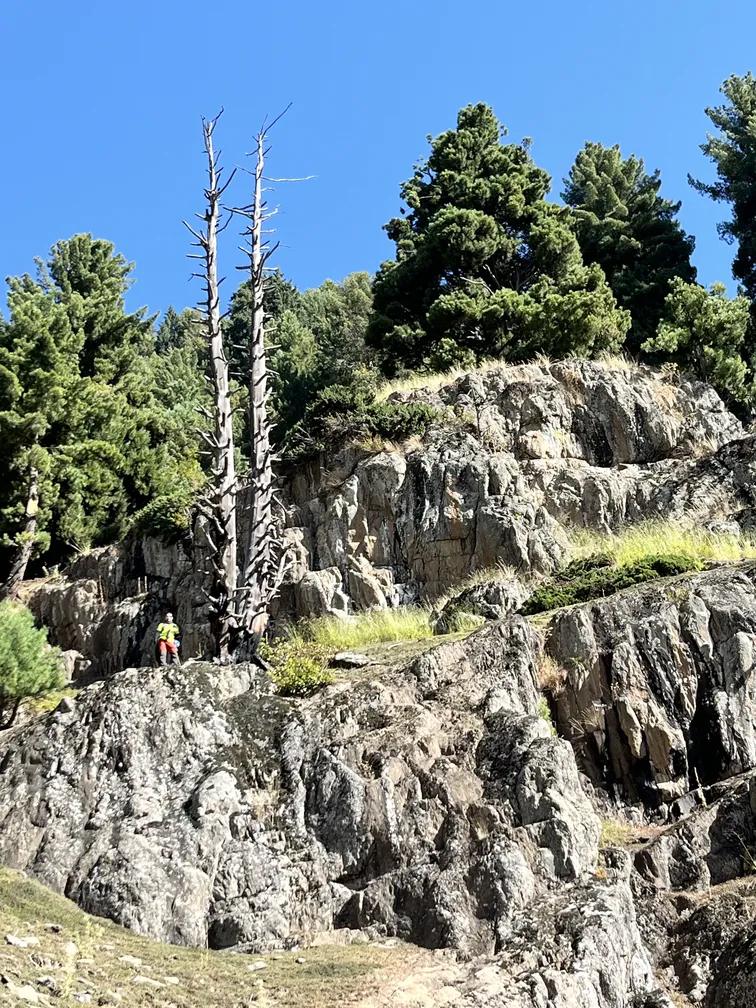
Day 2 - Lidderwat to Shikwas
On Day 2, we walked upstream alongside the stream coming from Tarsar lake.
Here I took a nice dip in the stream descending from the lakes and joining the Lidder river.
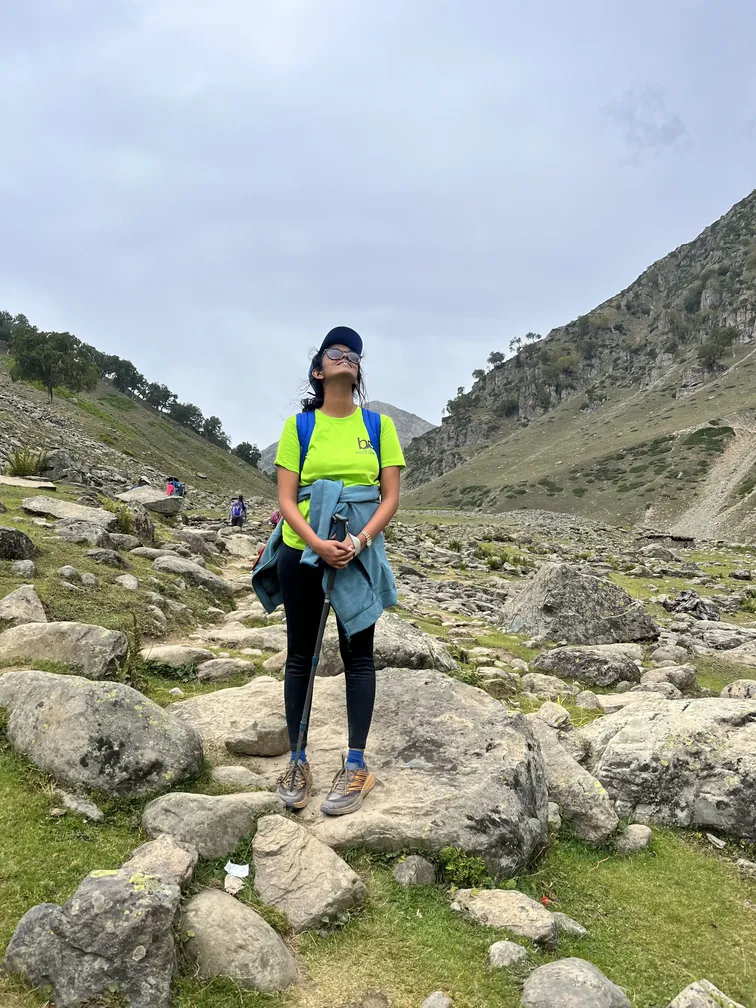
The day ended at Shikwas campsite, which sits on a fork in the trail. One trail leads to Tarsar lake, and the other to Sundersar lake.
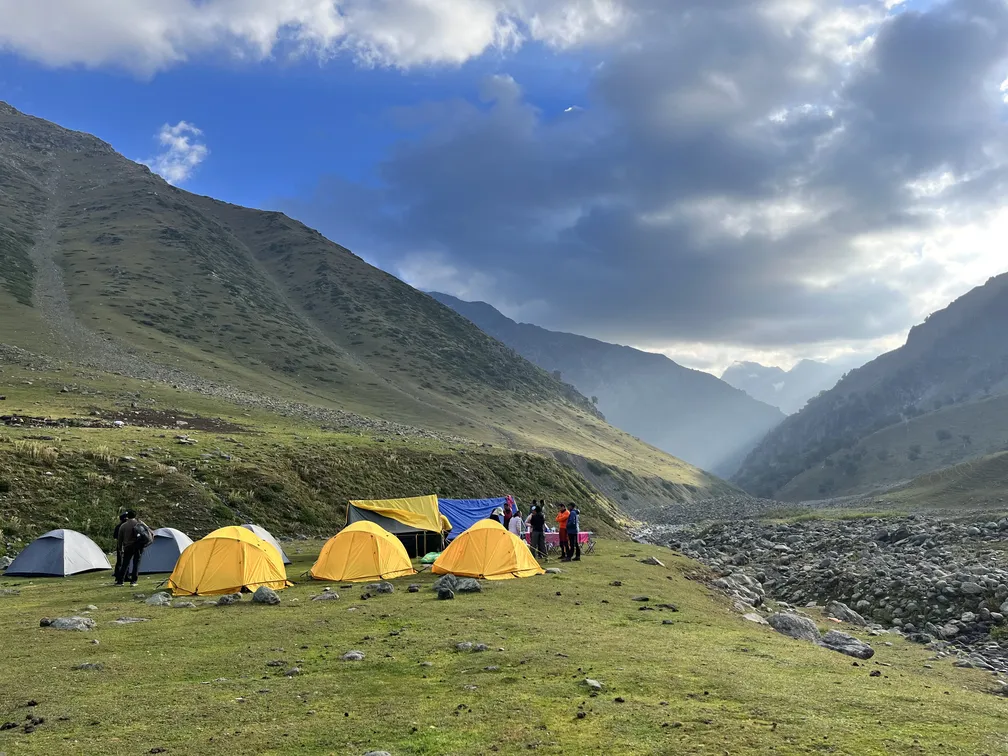
Day 3 - Shikwas to Tarsar lake;
Acclimatization hike was climb up to a ridge overlooking Tarsar lake
Day 4 - Tarsar Lake to Sundarsar lake, to Marsar lake, and back to camp
Tarsar lake campsite to campsite before Sundarsar lake; post-lunch, walk to Sundarsar lake and then Marsar lake (ridge-top only), and back to campsite
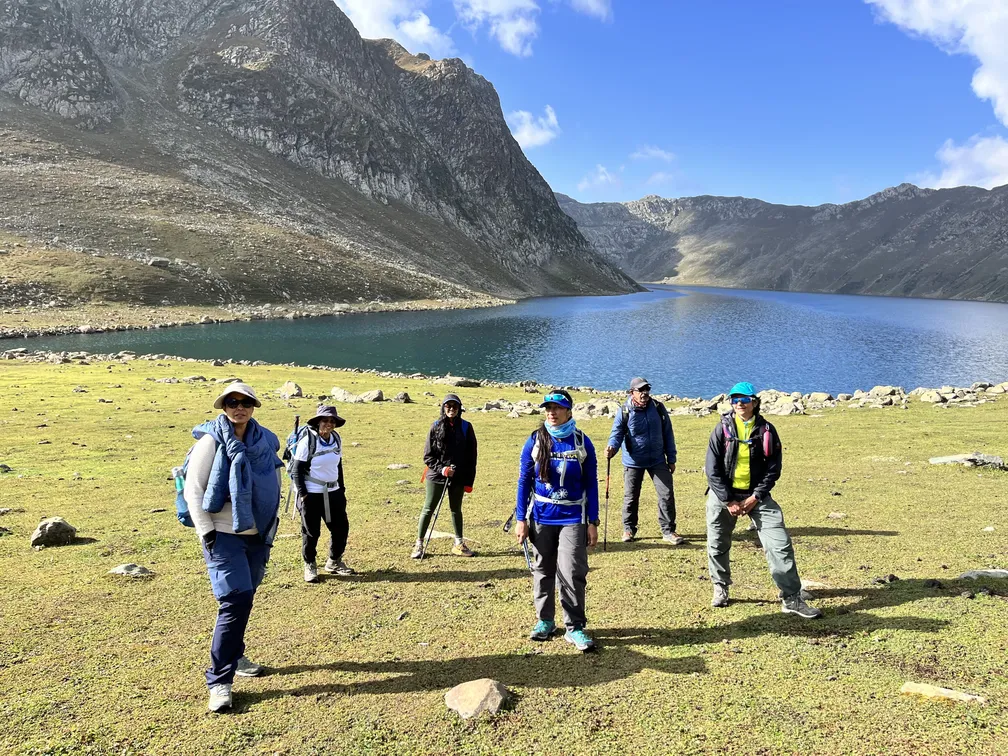
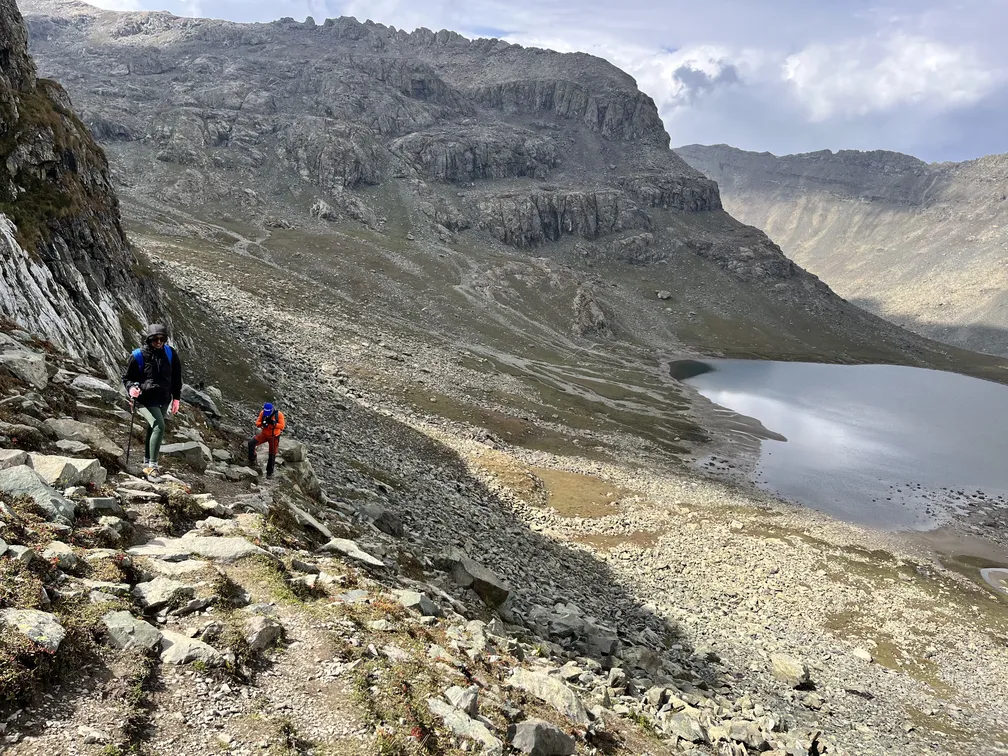
Night 4 - First snows of season started falling; Aayushi started to sort of panic, while I was having a very nice sleep. The snow started falling at 12:30. Around 2am our guide Paddy roused the supporting guides and cooks. All the rest of the night I was in a mixed-zone of falling asleep and then waking up, trying to shake the sides of my tent.
By about 6, we were all out of our tents, and were huddling in and around the kitchen tent.
Day 5 - Walk from Sundarsar lake campsite to Lidderwat, first in heavy snow, then in heavy slush
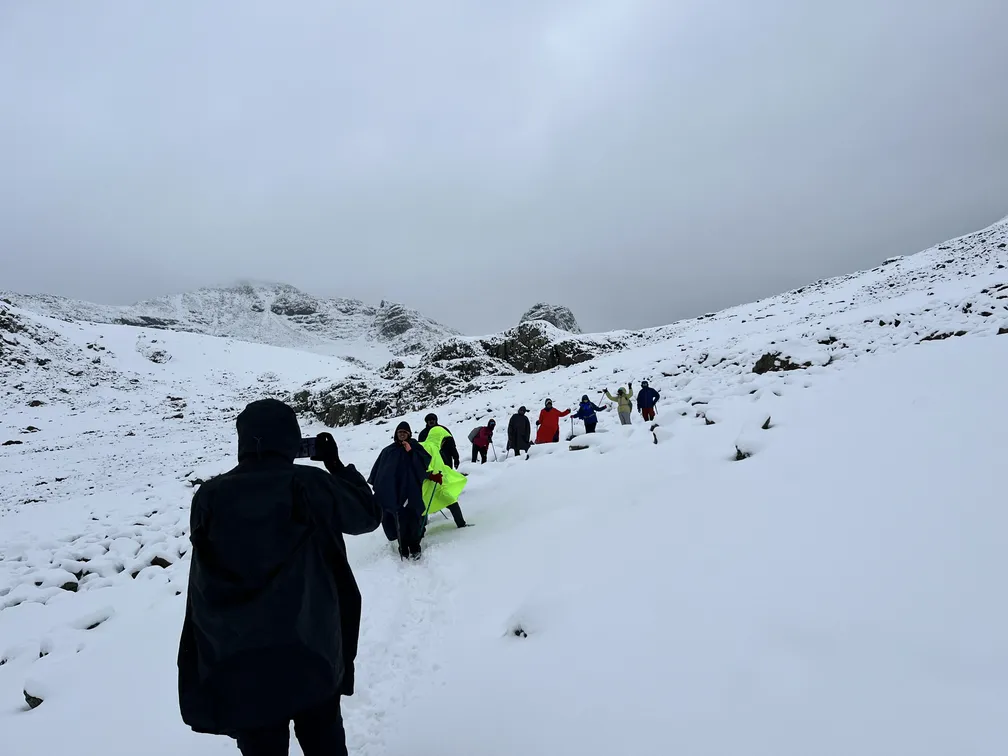
Once our own packing was completed, I helped out with unpacking of the tents - helping remove the snow-covered pegs from the ground, and helping with overall unpacking. Once we had completed all this and were well packed, we followed some horses returning to lower altitudes (the trekking group were presumably having a rest day amidst the snow). The task was clear - follow the tracks in the snow created by the horses and their master. We also had clarity that the way back was mostly a downhill descent along the river stream that is coming from the river.
Walking in the snow was for the most part fun. Our walk took most of the morning, and in all of that time the snow did not quite turn to slush. What this meant was that we were walking quite comfortably on powder that merely crunched under our feet, but which did not cause us to slip.
After crossing Shikwas was actually the more difficult part - here it was a race against the sheep, who seemed to be in an equal hurry to escape the snowy mountains.
Day 6 - Lidderwat to Aru valley
Early walk back - the mountains were looking gorgeous with their new snow cover, and I thought that the overall place had a vibe of freshness that always comes after heavy rains.
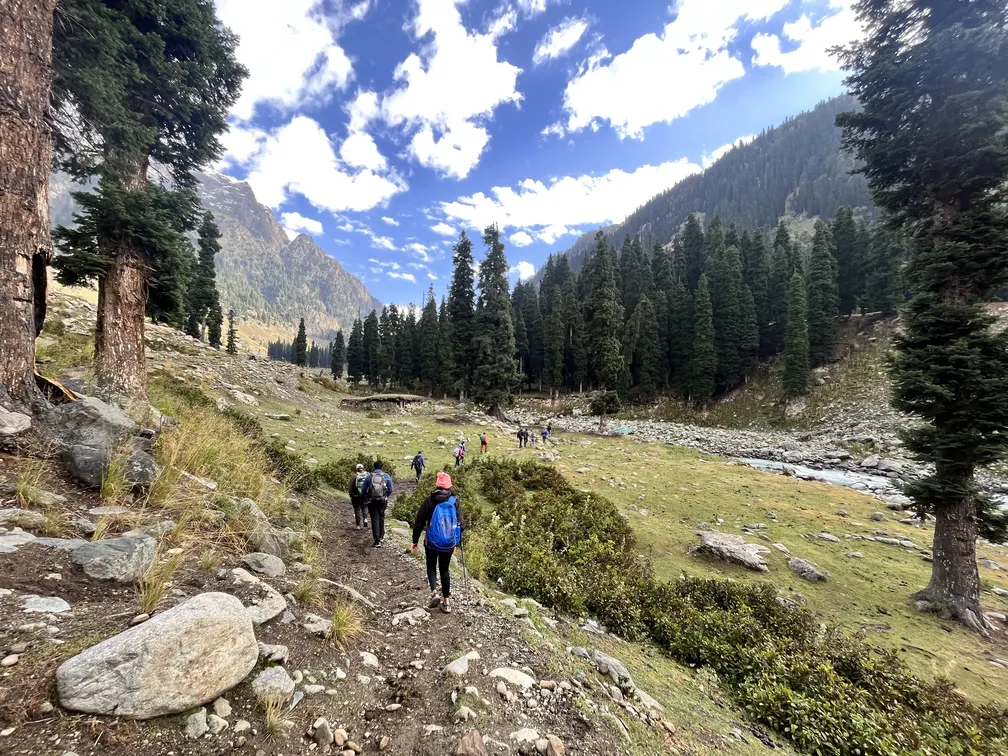
Some observations on Kashmir
Lakes in Kashmir - the flattish nature of the mountains - the altitude gain is much more gradual as you move along rivers, and the larger number of streams, means that lakes form.
Kashmir treks are super-approachable - If you’re coming from anywhere other than North India. This is because Srinagar is super approachable with a direct flight from most metros.
Kashmir continues to be tourist-friendly - There most certainly is a strong armed forces presence. However, the people are extremely warm and friendly.